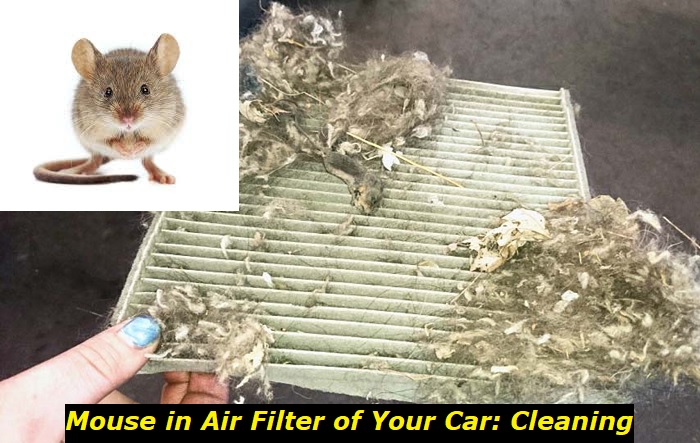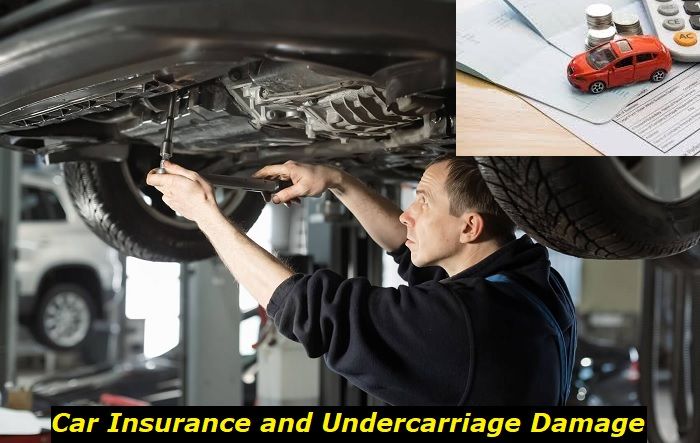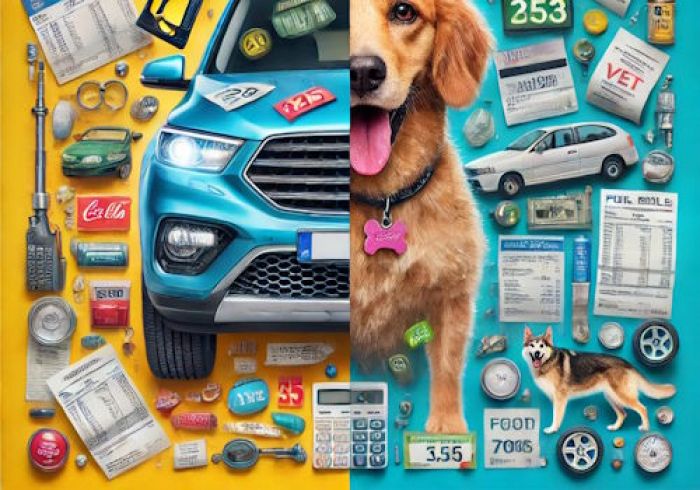There can be a mouse infestation in your car and one of the places that houses them is the cabin air filter. Not to worry, there are ways to get rid of these rodents and deal with the mess they create while in the vehicle.
You can remove the mouse nest in your car air filter by replacing or removing and cleaning the unit. Other affected areas will be cleaned and disinfected as well. For example, the blower motor area or the whole engine compartment. You'll be trying to get rid of debris that has been dragged in, mouse waste, etc.

We've described the cleaning approaches that you can implement depending on the condition of the mouse infestation. This includes tips for preventing mice from getting into the car and/or living inside it.
Mice in a Car's Cabin Air Filter
1) Reasons Mice Go Into Vehicles
Mice are notorious for being one of the most common pests that infest houses. But they're also a common problem for cars, particularly when they build nests in the vehicle while it's parked for a long period. Mice go into cars or live in them because of the following reasons:
- The need for warmth
- An ideal dry environment
- A sense of safety
- Free access
- To give birth to their young
- Smell of food coming from inside your car
2) Dangers and Consequences of Mice Infestation in a Car
A mouse can destroy your car's components or pose problems such as bad or harmful air filter odor. It will be worse if the animal dies inside the vehicle. There's also the possibility of being at risk of diseases because of the pathogens that are carried by such rodents. For example; viruses, bacteria, protozoa, etc.
It's not nice or hygienic to have these animals in an automobile. And it will be very bad if they're allowed to live inside or go in and out as they please for too long. The vehicle will be dirty and smelly because mice can defecate or urinate anywhere they go.
Let's also look at what these critters can do to a car's parts as well. Is it the annoying possibility of them chewing on wires or other vehicle components? This can cause short circuits, malfunctions, or even fires!
There's also a chance that their nest will lead to significant clogging when they build it in the air filter. It will lead to a decrease in airflow.
Given the above, you should treat the case of mouse infestation in your car as a hazard to the vehicle and to your life. They can damage car parts to the point of putting you and others at risk of accidents while driving. They can also be a risk to you and others (e.g. your loved ones) medically and financially.
It can be frustrating to have to deal with a mouse infestation, especially when you don't know where they're based in your car. So keep in mind that it may be as difficult as finding a solution to a mouse infestation in your home.
Thankfully, there are straightforward and effective ways to stop these rodents from being a menace in your car, if you spot their nest in the vehicle air filter. You'll be able to take care of the mess they make and prevent them from going into the vehicle or being convenient enough to build a nest inside it.
How To Clean the Car Air Filter after a Mouse Infestation
1) Car Cabin Air Filter Location
The cabin air filter may be situated directly at the back of the glove box or under the hood of your car. Some are positioned or made in such a way that you can swap out the air filter with the glove box still in its normal position. But many filters necessitate the removal of the glove box totally to get to them.
2) Cleaning Methods for Different Types of Cabin Air Filters
There are cabin air filters that are designed to be washed and there are others that aren't made to handle such a cleaning approach. The former can simply be cleaned by giving them a good scrub with water and laundry detergent. The latter can be cleaned with the aid of a vacuum cleaner.
However, a damaged air filter will have to be swapped out. It may have even sustained damage from the mice chewing on or through it. You shouldn't bother to clean a damaged air filter or one that's irredeemable. Just buy a new one and put it in, but ensure that the surrounding or connecting areas are clean.
3) Cleaning Other Areas or Components Apart from the Air Filter
Sometimes, it may not only be the cabin air filter that will be dirty. You may find nearby areas or many spots in the engine compartment littered with mouse feces and stained with their urine. Such a sight can be very disgusting to behold, especially if there's also debris that has been dragged in by the rascals.
You may have to clean the blower motor and its housing or the whole engine area with the aid of an expert. And you should ensure that safe sterilizers or disinfectants are used.
4) Hiring an Exterminator
Sometimes; the infestation can be so severe, frustrating, or scary that the best solution will be to pay a professional rodent exterminator to do the job. They'll be able to get rid of the mice more efficiently and faster, especially from hard-to-reach places. They can also help in preventing future occurrences
Common Methods for Keeping Mice Away from Your Car's Air Filter
One of the most common ways to keep mice or other rodents away from the air filter is by protecting or covering all holes or openings that lead to it. See an elaboration of this approach as well as a description of other mouse-repelling methods for your vehicle below.
1) Protect Any Small Entrance Into the Engine Bay
These rodents can go through very narrow entrances or spaces to get into the engine compartment. So it's crucial to find them and cover the ones that are OK to be blocked. Wire mesh or steel wool can be used to protect such gaps.
2) Open the Hood for Some Time
Mice like the warmth that a car's engine has after usage. So you can open the hood for a period so that the engine can cool down. This may deter the rodents from going into the engine bay or reaching the cabin filter.
You may even use this technique to lure the animals to come into view or see where they're hidden in the engine compartment. Just be ready with a good means of catching or killing them.
3) Utilize Traps
These are recommended to those who are already experiencing the infestation. There are various mouse trap types to buy that can do the job effectively. For example; live traps, snap traps, and glue boards. The bait could be peanuts, peanuts, cheese, bread, etc. Check your chosen trap regularly and dispose of the animals appropriately.
4) Avoid Leaving the Vehicle on Idle
Remember that these critters are attracted to a warm car, so it's important to avoid leaving the vehicle on idle often or for too long. You can open the hood if you have to let the car idle for an extended duration. This will help in cooling the vehicle while it's idling.
5) Make the Engine Smell Unpleasant
Producing an engine bay smell that mice hate has been proven to be effective. For example, soaking cotton balls in vinegar and putting them in some spots in the engine compartment could repel the rodents or send them away.
Another example is placing a used cat or kitten litter near the vehicle to irritate the animals and fend them off. That's the smell of ammonia working. Other smells that can do the job include peppermint or peppermint oil, chili powder, clove, citronella, eucalyptus or eucalyptus oil, lavender, bleach, cinnamon, etc.
6) Utilizing Electronic Repellants
This ingenious method for keeping a mouse away involves using an electronic device that emits a high-frequency sound which can only be heard by the rodents. The noise will deter them from coming close to anywhere that such a device is positioned.
Ensure that you read the product description and reviews diligently before purchasing one of the electronic devices in the market. Some have electromagnetic features.
Note: Ensure that you check the cabin's air filter regularly and clean it. This can be every 12 months or 12,000 miles.
Conclusion
Avoid using poisons to get rid of the animals because they can die in a spot that's hard to reach. This will mean that you'll have to get rid of the carcass and also its smell. That's more work for you, including the mess that the critter has been making so far.
About the authors
The CarAraC research team is composed of seasoned auto mechanics and automotive industry professionals, including individuals with advanced degrees and certifications in their field. Our team members boast prestigious credentials, reflecting their extensive knowledge and skills. These qualifications include: IMI: Institute of the Motor Industry, ASE-Certified Master Automobile Technicians; Coventry University, Graduate of MA in Automotive Journalism; Politecnico di Torino, Italy, MS Automotive Engineering; Ss. Cyril and Methodius University in Skopje, Mechanical University in Skopje; TOC Automotive College; DHA Suffa University, Department of Mechanical Engineering






Add comment